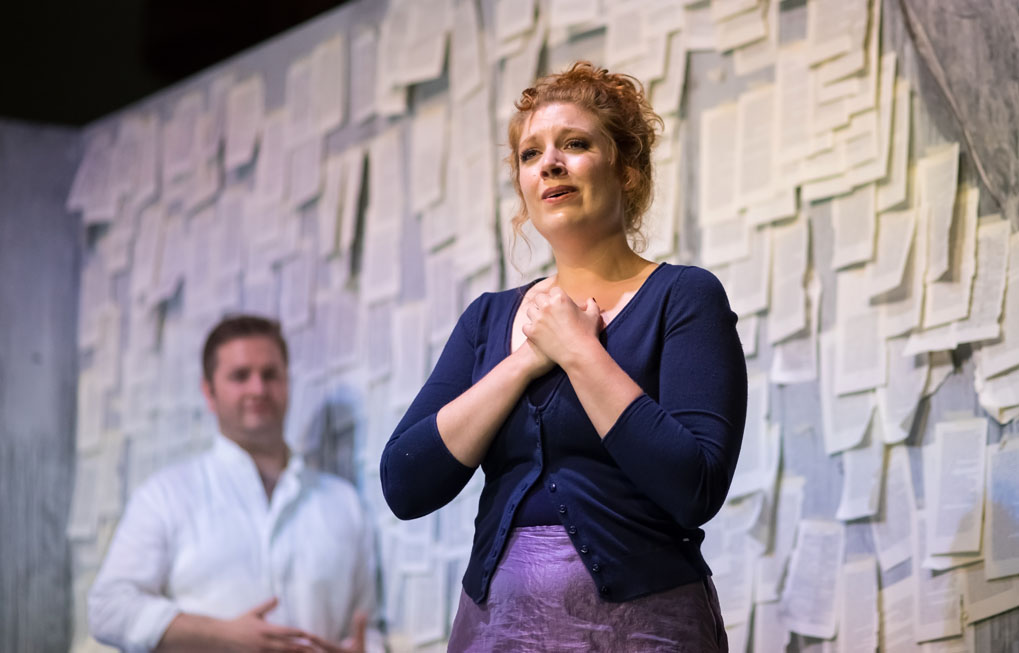 Continuing our sojourn in Holland we had the opportunity to see the Nederlandse Reisopera’s La Bohème which was staged as part of The Hague’s Festival Classique in the Kursaal at Scheveningen.
Continuing our sojourn in Holland we had the opportunity to see the Nederlandse Reisopera’s La Bohème which was staged as part of The Hague’s Festival Classique in the Kursaal at Scheveningen.
Based in Enschede and formerly known as Nationale Reisopera (National Touring Opera), the company is part of the National Music Quarter in that city and tours three different productions each year around the Netherlands and occasionally abroad.
This production of the evergreen Puccini opera was what was described as a “pocket version”, with its running time cut by a half. First performed in 2011, it toured to London and the South West of England in 2013.
It was presented on a single, simple set with seven singers in unpretentious modern dress, accompanied by piano and percussion. What was lost in spectacle was made up for in the quality of the singing. Despite the poor acoustics in the Kursaal’s beautiful main room, the vocal talents of the young cast shone through and were of the highest quality.
This uncluttered, cut-down version concentrated on the relationship between Rudolfo and Mimi with no frills attached. Tadeusz Szlenkier as the struggling poet has a fine voice which was matched by the superb Zinzi Frohwein as his smitten lover. Gurgen Baveyan made an excellent and energetic Marcello, with Oddur Jónsson as Schaunard and Jasper Leever as Colline, making up the quartet of dissolute Parisian artists. South African Thembinkosi Magagula was a forceful and suitably capricious Musetta and sang beautifully, her Quando me’n vo’ being one of the evening’s highlights.
At the side of the stage musical director William Shaw on piano and Niek KleinJan on percussion managed to create a beautifully complete and accomplished accompaniment which belied their number.
Although the editing was cleverly done with none of the joins showing, I felt that sadly in this production important elements of the narrative were lost. La Bohème is about poor, starving intellectuals freezing in their Paris garret, conditions that exacerbate neighbour Mimi’s tuberculosis, leading to her tragic death. The first three acts of La Bohème take place in mid-winter and the cold is an important factor in the story, yet our boisterous bohemians are leaping about in jeans and T shirts without a shiver in sight and, consequently, the context of one of the opera’s greatest and best known songs, Che Gelida Manina, is lost.
Nevertheless, all the great arias and ensemble pieces were there, beautifully sung in magnificent surroundings. I shall look forward to the chance of seeing Nederlandse Reisopera’s productions of La Traviata and The Flying Dutchman later in the year. Michael Hasted 24th June 2017
Production photos by Maurice Haak

